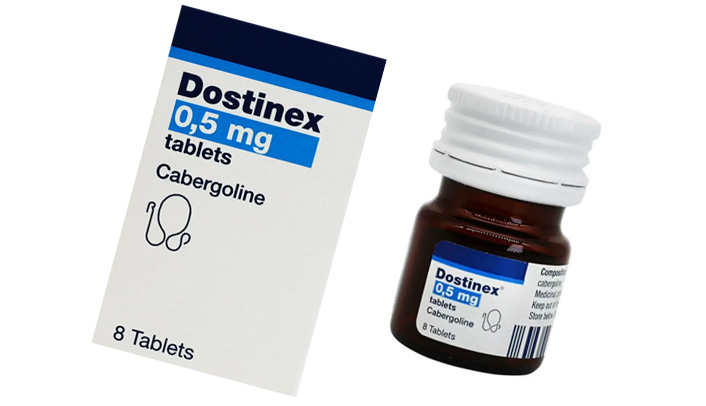Dostinex
Dostinex is the brand name of the drug Cabergoline that is an ergot derivative. It is used to prevent excess levels of prolactin in body. Cabergoline is an dopamine receptor agonist on d2 sites.

Mechanism Of Action
As cabergoline is an dopamine receptor agonist that works by blocking the excess prolactin secretion by directly targeting the d2 site. The recent research on rats have been shown that it effect the pituatory’s lactotroph cells and stop the prolactin leakage and decrease in prolactin levels in drugged rats.
Uses Of Dostinex
- Uterine fibroids
- Hyperprolactinemia
- Parkinson’s combined therapy with levodopa and carbidopa
- Acromegaly
- Prolactinomas
- Amenorrhea
- Oligomenorrhea
- galactorrhea
- non puerperal mastitis
- anovulation
- galactorrhea
- To control gynaecomastia in male’s
- Adjunct to SSRI antidepressants
- Ovarian hyperstimulation syndrome
- Ventral tegmental area
Dosage and Drug Administration
The drug can be taken with or without meals. The initial dosage of Dostinex is 0.25mg taken twice a week it may increase to 0.25mg more according to the doctors approval with the serum prolactin levels. The dosage adjusts according to the patient’s output. After the increase in dosage the benefits are not seen then give the dosage with maximum benefits to patient. Do not start or stop any dosage without doctor’s approval. Doctor will have periodic check up and will undermine what is the best dose to be given.
Side Effects
- Headache
- Hive
- Allergic reaction
- Mood changes
- Vomiting
- Nausea
- Swelling of face, lips and tongue
- Weakness on any side
- Tingling of arms, legs or fingers
- Constipation
- Dizziness
- Diarrhoea
- Stomach cramps
- Shortness of breath
- Persistent cough
- Swelling of ankles and feet
- Painful menses
- Vision changes
- Breast pain
- Muscle cramps
- Trouble breathing
- Change in the amount of urine
- Chest pain
- Rash
- Weight gain
- Chills
- Fever
- Confusion
- Loss of appetite
- Abdominal pain
- Lower back pain
- Stuffy nose
- Hallucinations
- Full feeling
- Difficulty having bowel movement
- Loss of strength
- Acid or sour stomach
- Anxiety
- Belching
- Blemishes on skin
- Dry mouth
- Toothache
- Depression
- Redness of face, neck and arms
- Trouble sleeping
- Sweating
- Sensation of spinning
- Muscle stiffness
- Sneezing
- Difficulty in concentration
Precaution and Warnings
Give your full personal and past history. Do not forget to tell if you had any surgeries or any allergic reaction due to any medicines. Also if you have any liver, stomach, kidney and intestinal disease please let the doctor know.
Pregnancy and Breast-Feeding
Do not use this medication while you’re pregnant or during breast-feeding as it may be harmful for the baby.
Drug Interaction
Some drugs can change the course of action of the drug therefore should not be given with Dostinex like antipsychotic medication (haloperidol, chlorpromazine) and ritonavir, and macrolide antibiotics.
Drug Images

Cabergoline
Cabergoline is a medication primarily used to treat high levels of prolactin hormone in the body, a condition known as hyperprolactinemia. It belongs to a class of medications called dopamine agonists.
High levels of prolactin can lead to various issues, such as irregular menstrual periods, infertility, and unwanted breast milk production in both men and women. Cabergoline works by stimulating dopamine receptors in the brain, which helps to reduce the production of prolactin by the pituitary gland.
Hyperprolactinemia
Hyperprolactinemia refers to a medical condition characterized by abnormally high levels of prolactin hormone in the blood. Prolactin is a hormone produced by the pituitary gland, located at the base of the brain. Its primary role is to stimulate breast development and milk production in females during pregnancy and after childbirth. However, prolactin also has other functions in both men and women, including regulation of the menstrual cycle, fertility, and immune system modulation.



